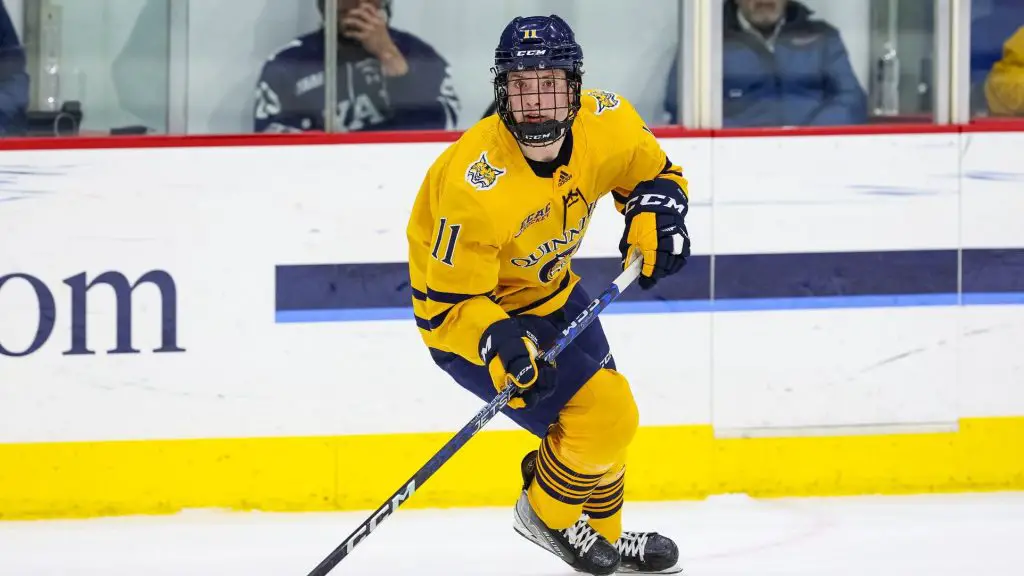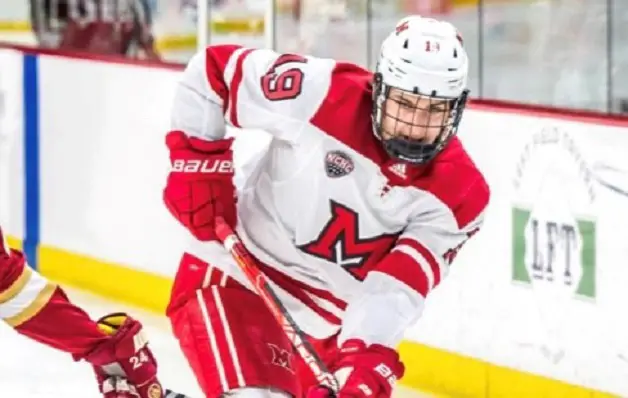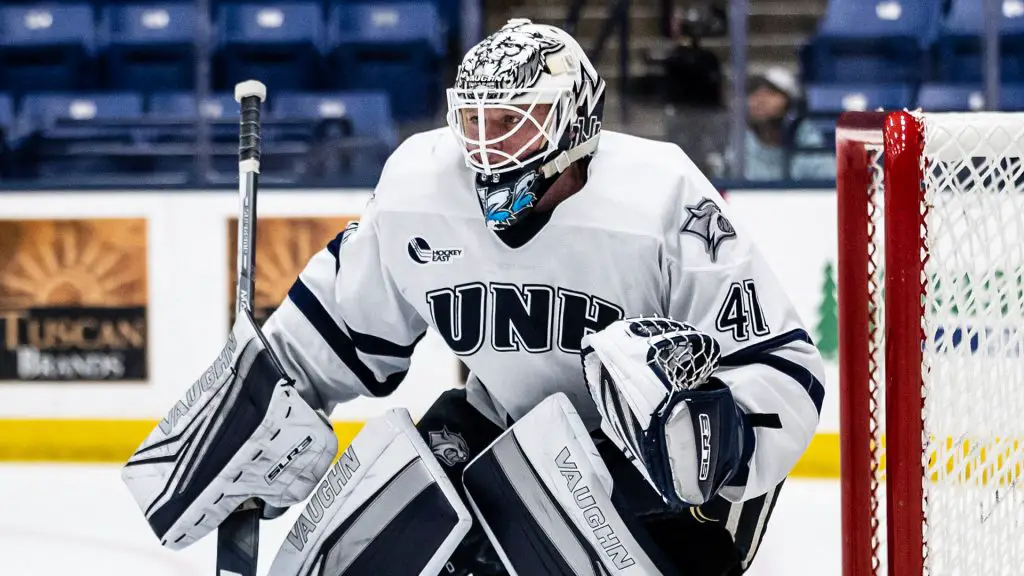
When the transfer portal was conceived, it was never supposed to be a landing place for college hockey free agents.
But years later, that is what is has become.
“I didn’t like my power-play time,” or “I didn’t get enough first-line reps.”
That’s the reason so many players, above-average student-athletes, are making quick moves to shift from one institution to another, without any explanation.
We don’t have to travel back in time to the days when most student-athletes had to sit a full academic year to earn their transfer. That applied to sports like men’s Division I ice hockey, football, basketball (men’s and women’s) and baseball. But the NCAA ruling allowing a one-time transfer from any Division I program to another, without the need to sit out a season has created what a lot of coaches consider a free agency of men’s Division I hockey.
“The messaging [of the portal] is a big thing,” said Minnesota Duluth coach Scott Sandelin, whose Bulldogs program won three national championships in the decade leading up to the transfer portal’s implementation. “Are we telling kids it’s okay to fail? If things aren’t going well, you can leave. Under some circumstances, that’s okay, but when players are coming into a situation knowing they don’t have to deal with any adversity, or that they can run from that adversity, to me that’s not the right message to be sent.”
Sandelin is hardly the only coach to oppose the instant transfer ability that is now reality in college hockey. But he’s also among the masses of coaches to admit the obvious.

“We’re still going to use the portal,” Sandelin said. “We’re going to lose players to [the portal]. So we’ll use it when we have to.”
The truth is the transfer portal isn’t a topic for debate. Every coach recognizes that it is here to stay. The modern NCAA has been clear that empowering the student-athlete is critical. If coaches can pick up and leave their school at any time, why can’t the player?
That said, for some coaches it is forcing a change to a long-term philosophy. To many recruiting a student-athlete has never been only about bringing in a player to coach, but also a young person who you can mentor and nurture.
Rick Gotkin, the dean of men’s college hockey coaches about to enter his 36th season, all at Mercyhurst, says that bringing along a young man over a four-year period is germane to what he does as a head coach.
“I absolutely do not like it,” Gotkin said of the transfer portal. “I’ve always said that I don’t want other guys’ players. The guys we recruit, I want them to come in here and have a great experience. I want to watch them develop on and off the ice and I want to see them graduate from there.
“I’m old school. I’d rather have a freshman come here and watch him through the good and the bad. Keep getting better on and off the ice.”
The transfer portal itself isn’t as new as most may think. It was developed by the NCAA in 2018 as a vehicle for student-athletes to declare their desire to transfer simply by registering themselves with the NCAA. In the early years, the numbers of players in the portal each season was relatively low in men’s Division I hockey. But once the NCAA’s transfer policy changed to allow transfer without penalty changed everything.
Changing transfer rules after COVID created interesting timing
The change to the NCAA’s transfer rule allowing players to transfer without having to sit out a season occurred in April 2021. That was less than a year after the NCAA announced that most players who lost or had their season interrupted by COVID would receive an extra fifth year of eligibility.
Thus, seniors who now had an extra season in which to play also had the temptation of finding a new campus, coach and team for which to play that final season.
The result is a skewed data set in the portal itself. Over the last two offseasons, about 200 student-athletes entered the portal and did not find a new home. Many of these players, though, were fifth-year players looking for a destination. Maybe they wanted a change, but in many cases the team they played with for four seasons didn’t have a place for that player on the roster.
With the fifth-year COVID player exemption about to expire (the 2024-25 season will be the final with fifth-year players), the actual volume of players entering the portal per season should decrease. And at that time will we have a better idea of just how much impact the transfer portal is having.

For emerging programs, the transfer portal has been a valuable tool
Not every Division I men’s coach is opposed to the portal. Take, for example, programs that are just starting and trying to build a roster.
Long Island University announced the start of a Division I men’s and women’s program during the NCAA’s shutdown due to COVID in 2020. While many thought that was crazy, the change in the transfer rule helped build the rosters for those teams.
The 2021-22 LIU roster had 13 NCAA players who had transferred knowing they wouldn’t have to sit for a season. The same existed for St. Thomas, which played its first Division I season in 2021-22 with nine transfers on its roster. Augustana will began play this season with 15 transfer players.
“I like it,” said Arizona State coach Greg Powers. “I think it holds everyone accountable. I think it gives kids a good second chance with not having to sit out a full year if they want to go try something new.”
Powers, who had four transfers on his roster back in 2019-20 prior to the change in the transfer rule, says that players who have transferred into the Sun Devils program have thrived.
“From a success standpoint on an individual basis, the guys we have brought in [as transfers] have done really well,” said Powers. “Everybody is still perfecting how to use the portal. As a newer program, we’re leveling out with recruiting. The more that we get into it, the less we’ll use [the portal].
“As we mature as a program, the less we hope we’ll need it. But to be able to competitively fill in holes with veteran players who can come in an make an impact right away is something you have to look at.”
At Quinnipiac, the portal has changed recruiting
When Quinnipiac captured the school’s first ever national championship this past April, there were four transfers on the roster. The tying goal was scored by Collin Graf, who came to Quinnipiac after playing his freshman year for Union. Graf tied Quinnipiac’s Division I record for points in a season with 59 and was a Hobey Baker finalist last season.
Quinnipiac coach Rand Pecknold is a bit of a pioneer when it comes to using transfers. More than a decade ago, Pecknold was familiar with rules that stated if a player completed his undergraduate degree and still had eligibility remaining, that player could transfer to another school to pursue a graduate degree and play out their remaining eligibility.
Pecknold used that rule in 2014 to bring in high-end defenseman Justin Agosta from New Hampshire. Agosta went on to register three goals and 22 points on the blueline that season for the Bobcats.

Once the transfer rule changed in 2021, Pecknold also adapted how his assistant coaches go about recruiting.
“Whether you like the portal or don’t like the portal, you better embrace it,” said Pecknold. “With everything, recruiting, coaching you have to think outside the box. We need to find ways to do things differently.
“We watch a lot of college hockey today. All three [coaches], we’re watching players that are seniors who are good players, who might not go back [to their current teams]. How do we know that? We don’t. But we watch a lot of players.”
Pecknold says he wants his staff to be ahead of the game when the portal opens, having evaluated and kept notes on a large number of players.
“A lot of teams are scrambling when a kid goes in the portal,” Pecknold says. “I want us to be really prepared when a kid jumps in the portal. Then we can figure out why is he in the portal. Can he be better than he was for his last school and what can he provide for us?”
The disadvantaged schools: Resources, rules come into play
Not every school is in a position to fully take advantage of transfer rules.
At Holy Cross, for example, there is no graduate school, so graduate transfers are out of the question. Additionally, the college’s admission rules require a student to attend for a minimum of two years to qualify for a degree.
So for a coach like Bill Riga, a former Quinnipiac assistant who worked the portal extensively with the Bobcats, he is extremely limited with what he can do.
“Competitively speaking, it’s not easy to deal with for a small school compared to a bigger school with more resources and history,” said Riga. “We don’t have grad school here and our guys have to spend two years here to graduate.”
The point Riga raises about resources is concerning for even some of the most successful schools. With the emergence of NCAA rules supporting student-athlete compensation for NIL – which stands for name, image and likeness – many coaches are concerned that the biggest programs with the deepest pockets might be able to use money to influence players to transfer.
NIL allows players to be compensated for the use of their name, image and likeness. Though currently the number of players receiving significant compensation is limited in Division I men’s hockey, players at Power 5 schools like those in the Big Ten, or at Boston College and Arizona State, might have an upper hand to provide more compensation given each schools deeper pockets related to television revenues.
Nothing about the change in transfer rules feels comfortable, even for the most seasoned coaches. But as every coach says, you need to embrace it.
Simply put, it’s here to stay.


